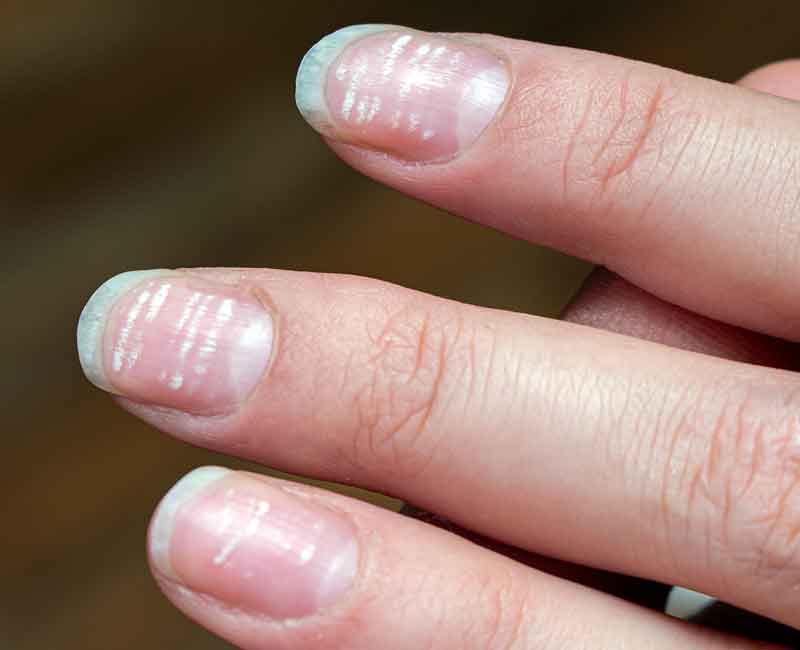White spots on your nails are a common condition and are generally harmless. They often appear after bumping or biting your nails, but they may have other causes, including fungi, allergies and certain medications. You may not need any treatment, or you may need to stop using products on your nails or take antifungal medications.

Leukonychia is a common condition that causes white spots or streaks on your fingernails or toenails. There are three types of leukonychia:
In some people, leukonychia appears as one or two medium-sized spots or many tiny specks. In others, the spots may be very large. You may have spots on only one nail, or you may have spots on many nails.
White spots usually mean that your nails have experienced some sort of stress. The stress could be from an injury, like hitting your nail against a hard surface, an infection or an allergic reaction. White spots are sometimes the side effects of medications.
Advertisement
Cleveland Clinic is a non-profit academic medical center. Advertising on our site helps support our mission. We do not endorse non-Cleveland Clinic products or services. Policy
The following are common causes of leukonychia:
Healthcare providers and medical researchers aren’t sure whether deficiencies cause white spots to appear on your nails. A deficiency is a shortage of a basic substance in your body that’s essential to your health, like certain vitamins or minerals. Some believe that a lack of minerals — including iron, calcium and zinc — may cause leukonychia. Others think it might be a vitamin deficiency. Still, others believe this isn’t true, or feel there isn’t enough research to make any accurate conclusions.
Anxiety itself doesn’t cause white spots to develop on your nails. But injury to your nail — like from picking or biting them — might. If you pick at or bite your nails as a result of your anxiety, speak with a healthcare provider.
Treatment for leukonychia depends on its cause. If you have white spots on your nails because of injuries, they’ll slowly grow out until you can remove them with nail clippers or nail scissors. Fingernails grow slowly, and toenails grow even slower. It may take up to six to nine months for white spots on your fingernails to grow out, and it may take 12 to 18 months for white spots on your toenails to grow out.
If you have white spots on your nails but had no injury, a healthcare provider may recommend several tests to help make a diagnosis, including:
If you have white spots on your nails because of a fungus, your options may include:
Nail fungi can be difficult to treat. It’s important to finish your full course of medicine. If you stop too soon, the fungus that causes white spots on your nails may come back and be harder to treat.
If you have white spots on your nails because of an allergic reaction, stop using the product you believe to be the cause.
Advertisement
The following tips can help prevent white spots from developing on your nails:
Contact a healthcare provider if:
A note from Cleveland Clinic
White spots on your nails often appear after an injury to your nails, like bumping them against a hard surface, hitting them by accident with a tool or biting them. In most cases, your white spots will eventually grow out to the end of your nail until you can clip or cut them off. Though it’s rare, white spots on your nails are sometimes a symptom of a more serious condition. If white spots appear on your nails alongside more severe symptoms, reach out to your healthcare provider.
Last reviewed on 09/13/2023.
Learn more about the Health Library and our editorial process.
Advertisement
Cleveland Clinic is a non-profit academic medical center. Advertising on our site helps support our mission. We do not endorse non-Cleveland Clinic products or services. Policy